
WEBSITES
Considering the websites are one of the primary ways you as non-profit organizations can connect with potential users or donors let’s spend a bit more time on this topic.
☛ A nonprofit website should serve five main purposes. These are:
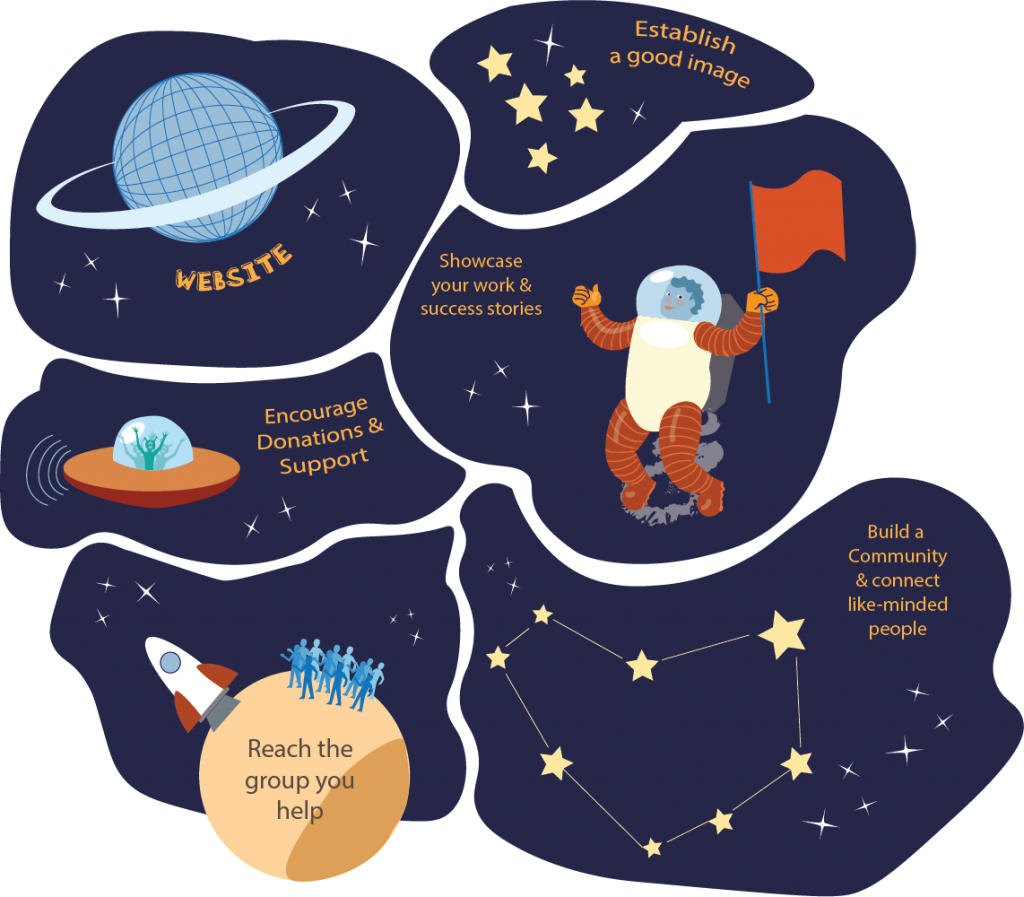
1. Establish a good image;
2. Showcase your work and success stories;
3. Encourage donations and support;
4. Build a community and connect like-minded people;
5. Reach the group you help.
Websites should be well-organized and easy to navigate. They also need to be visually appealing and have a feel-good vibe. Keep in mind all other content you are competing for with the consumer and differentiate your web site making it unique and noticeable.
- There is a lot of competition online, so your website needs to stand out. Having the same generic WordPress template as everybody else just won’t cut it. You need to build something unique to your organization.
- Your website needs to be optimized for mobile.
- Having a newsletter sign-up on your website is good but not enough. You need to follow-up and nurture your contacts/followers/potential users.
Although you don’t aim to sell products or services you still need to convince people to support your cause.
SOCIAL MEDIA
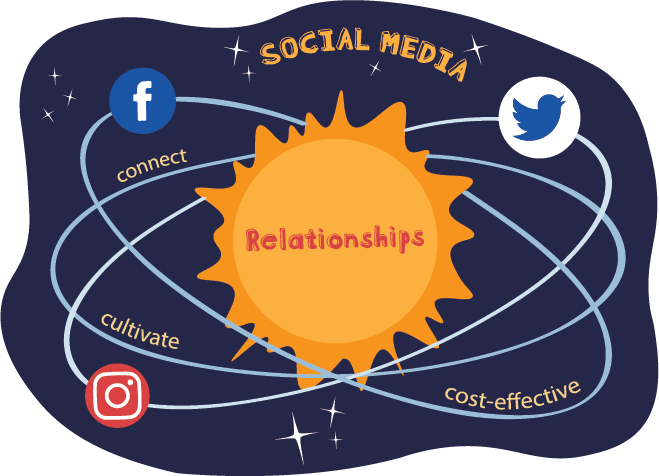
Relationships have always been a key currency in the nonprofit sector with NGOs relying heavy on them to drive membership, donations, volunteers, and advocacy.
Given that social media is about participation and connecting people, many NGOs are investing in online communications as a way to cultivate these relationships, while building loyalty and passion for their cause.
Social is a cost-effective medium, even with inclusion of promotion costs it is not even comparable to other traditional media but more importantly it is more relevant because internet is where the majority of NGO potential users are looking for solutions to their issues.
Statistics say the big majority of NGOs globally do have social accounts – dominantly on Facebook followed by Twitter and Instagram and with a solid presence on YouTube and LinkedIn (around 50% claimed they have accounts on these platforms).
Obviously having an account is far from having a “pretty account” and even further from having an impactful account, one that actually delivers and assists in user conversion.
If you are to remember one thing from this chapter it should be to look at your channels as your tools for conversion and asses them through that lens. Are they contributing to you getting more volunteers for example, if this is your goal? If not, change something.
FACEBOOK PAGE
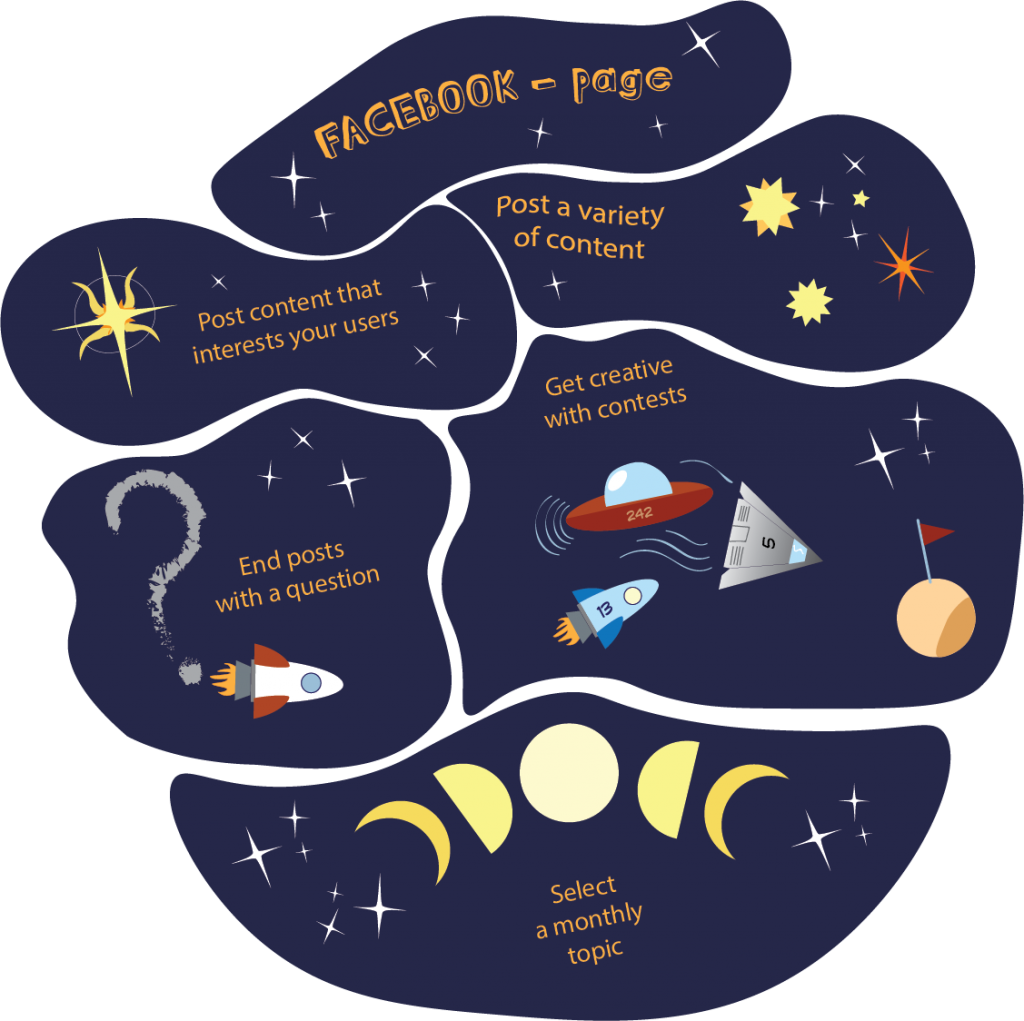
5 Tips for Creating Content on Facebook :
1. Post Content that Interests Your Users
The key to developing a winning fan page that builds fans and pushes your business forward is to post content that genuinely interests your users or donors. Don’t focus solely on you or what you do. By providing valuable information to the reader you will build a stronger relationship with current and prospective users.
2. Post a Variety of Content
Let’s go back to imagining we are some sort of NGO that supports students.
On your fan page, you’ll want to share a variety of content like:
Blog Posts – what’s new and happening at your organization? Did you conclude a networking event for students last month?
Photos – in addition to photos of the work that you do, take snap shots of employees, volunteers and users or even donors (obviously with permission from all mentioned). Upload social media images and pics from events you’ve attended or hosted, like your Student awards event.
Press Releases – let users know about the updates and improvements you’ve made
Videos – one of the most engaging pieces of content you can deliver. Doesn’t have to be expensive production, focus on relevant content.
3. End Posts with a Question

Fan page visitors are much more likely to pay attention and respond to your posts if you address them personally and encourage them to get involved.
4. Get Creative with Contests (and more)
Try an essay, photo, or video contest to get a higher level of engagement with fans.
Useful links:
☞10 Free Content Creation Apps You Need Now
https://www.socialmediatoday.com/social-business/10-free-content-creation-apps-you-need-now
☞9 apps for creating multimedia content
https://ecommerce-platforms.com/articles/9-apps-for-creating-multimedia-content
☞7 Tools That Make Interactive Content Creation Easy
https://www.entrepreneur.com/article/286280
5. Try Selecting a Monthly Topic
One idea in attempts to keep fans engaged is to select a different topic for each month (or some other convenient period). Talk about and post links to sites that cover that topic.
Having a different topic you address each month demonstrates that you have a continuous online presence, making you appear much more interesting.
FACEBOOK GROUPS
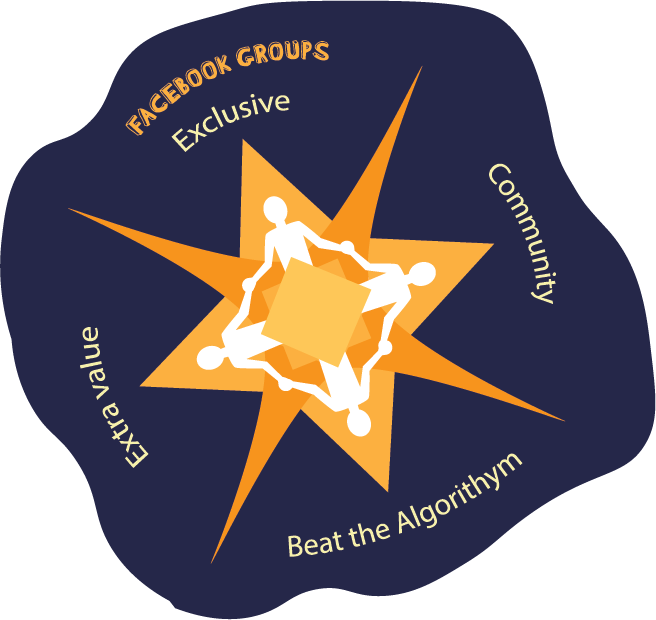
Why use Facebook Groups?
Research from Facebook shows that groups are seeing a lot more engagement than Pages. This is because Facebook groups enable members to start conversations more seamlessly than a Facebook Page does, while it’s also part of the broader shift away from public sharing to discussions in more enclosed, private space.
You have the option to create your own group(s) or act through other existing groups or both.
1.Provide extra value for users
Your Facebook group can easily provide extra value for your users.
You can use it as a space to do more deep-diving into subjects, or as a testing ground for new ideas. It’s also another way for your audience to connect with you, and each other, which can help to facilitate the growth of brand communities.
2.Create a sense of community
Your best bet in building relationships with your audience in the social media landscape is to build relationships and a sense of community.
You can even use groups for your own teams within your organization – this can be a way to keep everyone in the loop, and even build organizational culture with teams that are remote, or just not in the same location all the time.
3.Create a sense of exclusiveness
Everyone wants to feel special right? Private Facebook groups can provide just that.
With both private and secret groups you need to approve members as the group admin, which means that only people who you accept into the group can be active there.
4.“Beat” the algorithm
Since, as noted, Facebook Groups generally see higher levels of engagement than Pages – and posts from groups in which you’re regularly active are also given higher status in the News Feed algorithm – creating and maintaining a group can be a way to “beat” the algorithm and get your posts seen by your group members.
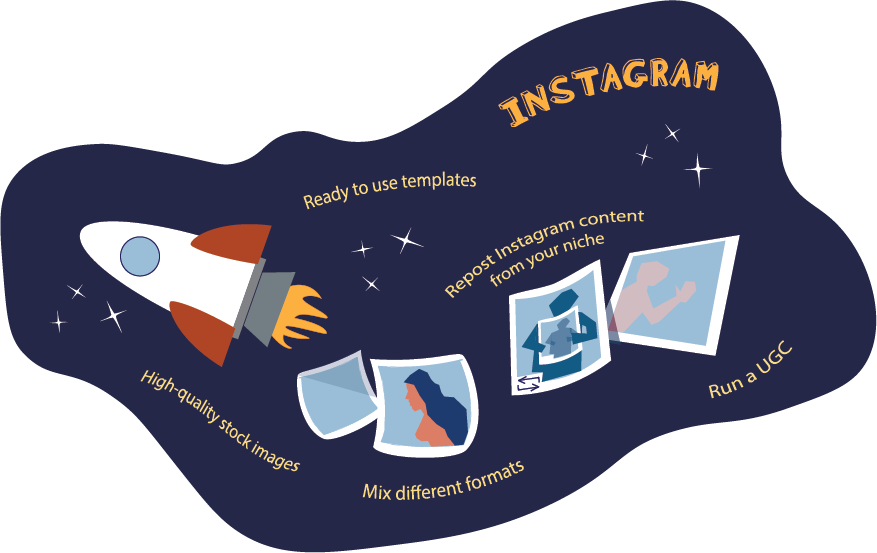
1. Research ready-to-use templates
There are also plenty of tools out there to help you create great Instagram posts without being a savvy Photoshop user. Online design tools such as Spark Post from Adobe, Canva and Venngage are incredibly useful when it comes to crafting attractive visuals for social media.
2. Find high-quality stock images
To find high-quality photos that don’t actually look “stocky”, head to Unsplash or Stocksnap.io. They offer a range of images for free, and you’re bound to find something suitable whatever your niche. Pexels is another option.
If you have a bit of budget to spend, try Stocksy.
3. Mix it up with different formats
It’s important not to neglect the variety of content formats available and Instagram is continuously adding new options and features. Stories, multiple photo posts, boomerang, live…
4. Repost Instagram content from accounts within your niche
Don’t have time to create your own Instagram content? Well, the good news is, you don’t need to!
It might be the case that other Instagram accounts are already doing a great job of producing content that your audience is interested in.
There’s nothing wrong with reposting Instagram content from any account that is relevant to your audience and your Instagram strategy, as long as you ask permission and give proper credit.
5. Run a UGC campaign
On the topic of using Instagram content other people created, it’s also a good idea to encourage your existing followers to create content around a specific topic that you can post to your feed.
This kind of content is referred to as “UGC”, or user generated content. The term also applies more broadly to any content created by users of any products or services about those particular products/services, with or without encouragement from the brand themselves.
